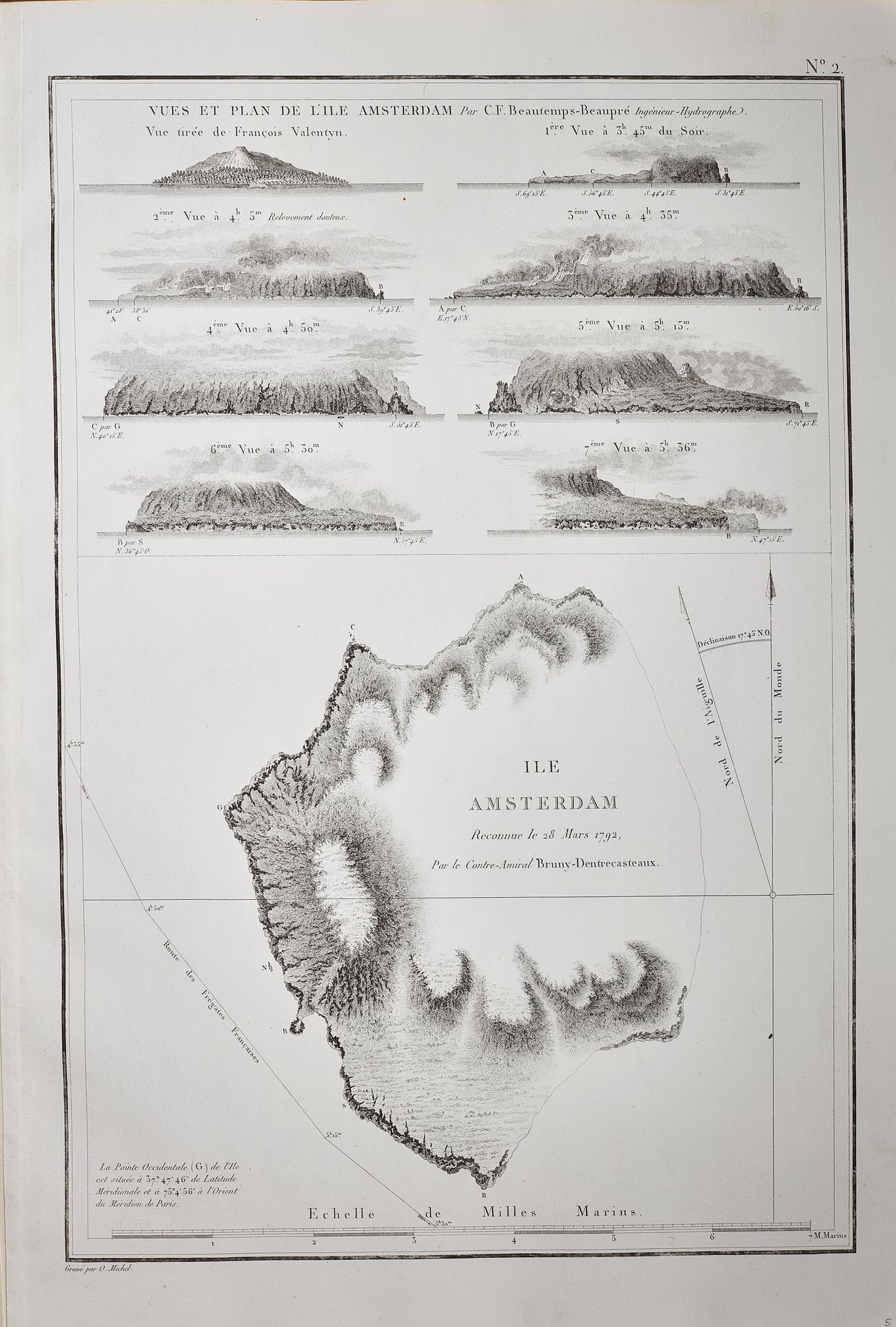Description
D'ENTRECASTEAUX, Antoine Raymond Joseph de Bruni
Voyage of Dentrecasteaux, sent in search of La Pérouse... Written by M. de Rossel, former captain of a ship. Paris, Imprimerie Royale, 1808 and 1807. 2 volumes of text in-4 (284 x 213 mm). Text: 2 ff.n.ch., 704 pp. with 32 engraved folding plates for volume I; 2 ff.n.ch., VIII, 692 pp. with 1 engraved folding plate for volume II. Atlas large in-folio (560 x 422 mm) with 2 engraved ff.n.ch. (title and table), 39 engraved plates, 29 of which are double-page. Half calf with corners, smooth spine (modern binding in the style of the time). Sabin, 22671-72; Hill, 467; Ferguson, I, 461; O'Reilly, Bibl. de la Nouvelle-Calédonie, 82. First edition. The text is illustrated with 33 folding plates; the atlas, published in 1807, contains 39 maps and plans. Particularly important report concerning the nautical details of this voyage in the South Seas. The maps that make up the atlas of the voyage were drawn up by the hydrographic engineer Beautemps-Beaupré, the measurements taken with the help of the Borda reflection circle allowed to specify the geography of these distant lands. During this voyage, the ships of Dentrecasteaux were stopped by the Dutch in Java. The logbook as well as the collections, seized by the English, were not to be returned to France until 1802. "From June 20 to July 2 (1792), he sailed along the reefs bordering the west coast of Caledonia for more than 300 miles, while Beautemps-Baupré mapped the island under sail. D'Entrecasteaux discovered several islets (Huon and Surprise islets) north of Caledonia and determined the position of the story that bears his name. He did not penetrate the reef. But he recognized (on June 21) Port-Saint-Vincent, which he called the deceptive harbor for lack of having discovered the pass. On the 23rd, they saw some natives, on the 22nd, they named Cape Goulvain after the crew master of the Recherche and, on the 28th, Cape Tonnerre - after the crew master of the Espérance. After visiting the archipelagos located west and north of New Guinea and the Amis archipelago, without having found any trace of La Pérouse, and after having circumnavigated Australia, d'Entrecasteaux returned to Caledonia and anchored on April 19, 1793 at Balade, the same place where Cook had stayed. The expedition stayed there until May 1st. While the sailors made water and wood, the scientists went about their business: La Billardière and La Haye were planting trees and collecting bird specimens, Bonvouloir was making astronomical observations, Péron was drawing. The relations with the natives were not without clashes: the discipline of the French crews was far from being as strict as that of Cook. There were robberies, natives were killed by gunshots, the famine was extreme... It was thought advisable to bury Huon de Kermadec, the commander of the Esperance, who had died on May 6, secretly at night, for fear of being exhumed by the cannibalistic natives. On May 9, the expedition left Balade. The ships went to reconnoiter the reefs that Cook had discovered to the N.-W. of New Caledonia. D'Entrecasteaux died at sea, of dysentery and scurvy, in July 1793, a few weeks after his passage to New Caledonia. The first account of his expedition contains details about the natives that complement or confirm those of Cook" (O'Reilly). Occasional light wetness in the margin of volume I, otherwise a very nice copy, complete with all required plates. Desroches, secretary at the French embassy in Constantinople
43
D'ENTRECASTEAUX, Antoine Raymond Joseph de Bruni
